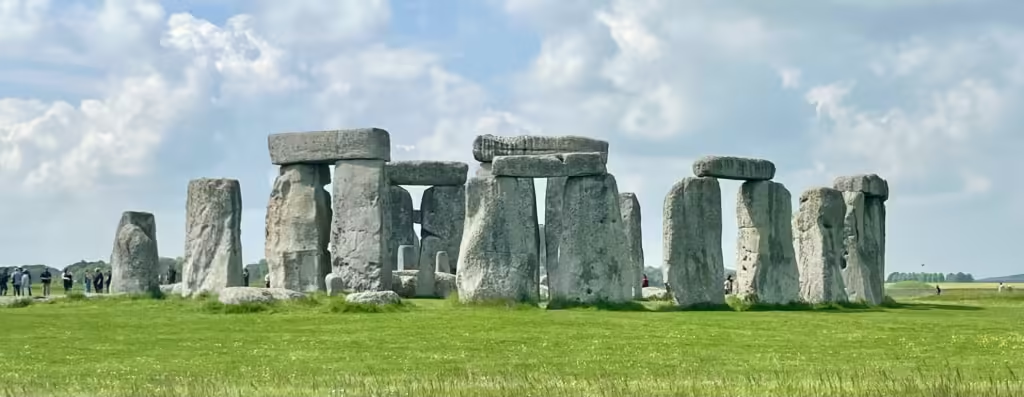If you’re planning to visit Stonehenge, this useful guide will give you all the best information, so that you can get the most out of your visit.
Stonehenge is one of the most popular tourist destinations in the UK and one of the most recognisable sites in the world. You may be wondering whether Stonehenge is worth visiting and what there is to see and do here. Read on for our guide to visiting Stonehenge.
This article contains affiliate links. If you click on a link and purchase I receive a small commission at no extra cost to you.
Table of Contents - Tap to jump to a section
ToggleIs Stonehenge worth seeing?
We think Stonehenge is definitely worth seeing for many different reasons. Stonehenge, managed by English Heritage, is an important world heritage site and it is a unique and memorable place to visit. It’s one of the most famous structures in the world and somewhere you need to see at least once in your life.

What is Stonehenge and why is it unique?
Stonehenge is a famous prehistoric monument consisting of a ring of vertical standing stones. It’s the only surviving stone circle in the world to have lintels, the horizontal stones sitting across the top of the uprights. Stonehenge is one of the most sophisticated prehistory masterpieces in the world and possibly the world’s most famous prehistoric monument.
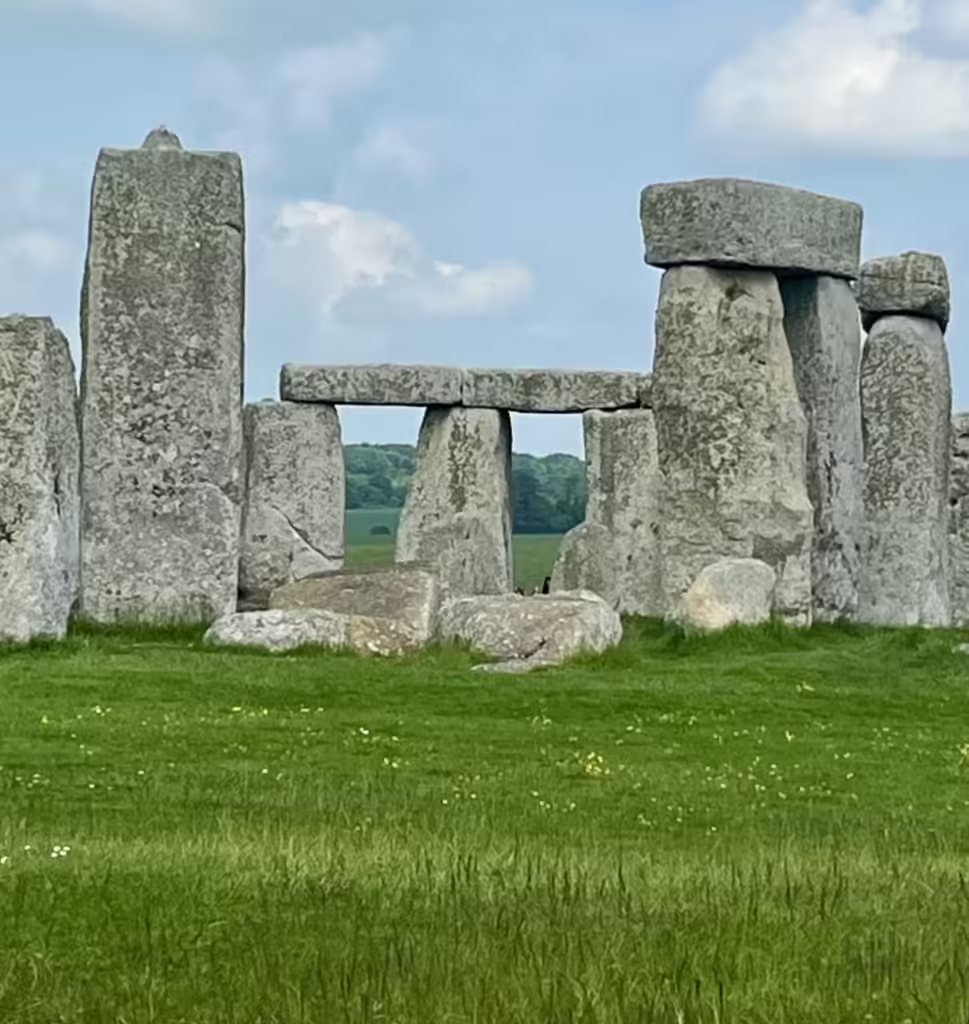
Why was Stonehenge built?
Due to the age of the stones, there are no records explaining why the stones were built. However, there are many theories about its origin and purpose. But today, it’s generally accepted to be a prehistoric temple aligned with the movements of the sun to mark important moments in the calendar. Stonehenge also aligns with sunrise at the Summer Solstice and sunset at the Winter Solstice which backs up this theory.
The hundreds of burial mounds in the surrounding landscape of Stonehenge suggests it’s a burial monument and a place honouring the ancestors.
Today, the iconic status of Stonehenge is a record of past ingenuity and achievements. It’s a powerful image which inspires people from all over the world to visit the site today.
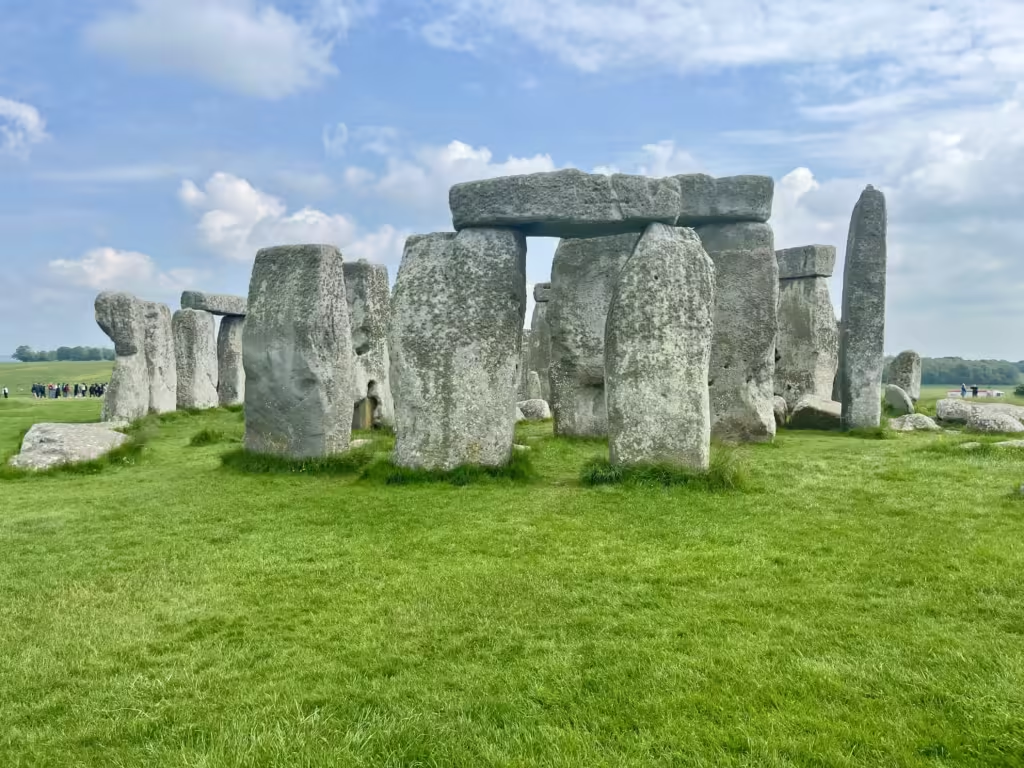
How old is Stonehenge?
The large circular ditch surrounding Stonehenge was dug in about 3000 BC. This ditch is about 100 metres in diameter. About 500 years later the stone circle was built.
Stonehenge was built in several stages: the first monument was an early henge monument, built about 5,000 years ago, and the unique stone circle was erected in the late Neolithic period about 2500 BC. In the early Bronze Age many burial mounds were built nearby.
Evidence shows humans inhabited the area around Stonehenge during the Mesolithic period (between 8500 and 7000 BC). There are four or five pits, three of which appear to have held large pine ‘totem-pole like’ posts that were erected during this time. Although, it’s not known how they relate to Stonehenge which was built about 5000 years later.
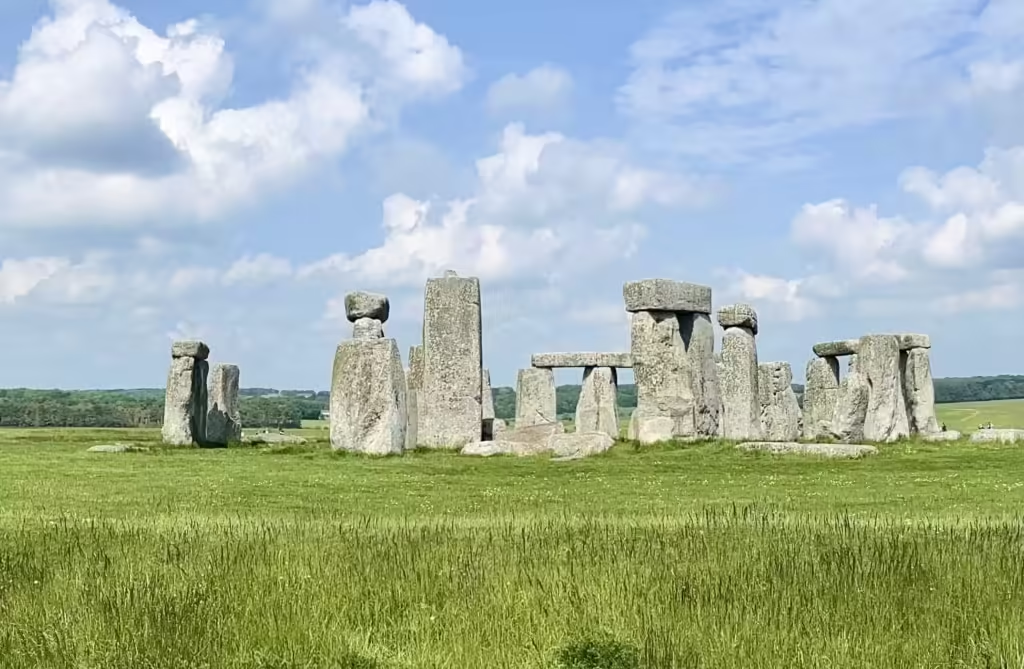
Why is Stonehenge important?
Stonehenge is an important heritage site and has been a legally protected scheduled monument since 1882.
In 1986, the area was added to UNESCO’s list of World Heritage Sites.
Evidence gathered from archeological digs here, help us to understand Neolithic and Bronze Age ceremonial and mortuary practices. Stonehenge offers an insight into how Stone Age technology and tools were used and how the people lived in prehistoric times.
How was Stonehenge built?
Stonehenge was built in stages over a period of about one thousand years.
Circular Ditch
The original circular ditch was dug with simple antler tools, and the chalk piled up to make an inner and an outer bank. Within the ditch was a ring of 56 timber or stone posts. The monument was used as a cremation cemetery for several hundred years. Red deer antlers found at the bottom of the ditch are now on display at the stonehenge exhibition. They are battered and the points are worn showing how they were used.
Bluestones
It isn’t known how the stones arrived at this site, but it is now known that the (smaller) bluestones came from the Preseli Hills in south-west Wales, over 150 miles (250km) away. These smaller bluestones weigh up to four tons each.
Transporting the stones
Some people think that the bluestones were taken southwards to Milford Haven and placed on rafts or slung between boats and then paddled up the Bristol Channel and along the Bristol Avon towards Salisbury Plain.
But as these quarries are on the north side of the Preseli hills, the megaliths could have been dragged across land all the way to Salisbury Plain.
They were probably moved using wooden logs or on sleds, greased to allow easier manoeuvring over rough ground.
Sarsen Stones
The larger sarsen stones are believed to have been brought from the Marlborough Downs, 20 miles (32km) away. These larger sarsen stones are between 6 and 30 tons in weight!
It’s thought the Sarsen stones were shaped in a nearby field using Sarsen and flint hammerstones because waste material and broken tools were discovered there.
Placing the stones
Pits were dug out and once the stones were in position, levered up a bank using counter-weights, dropped inside and backfilled with rubble. That’s a theory anyway! It’s pretty ingenious and created without modern machinery.
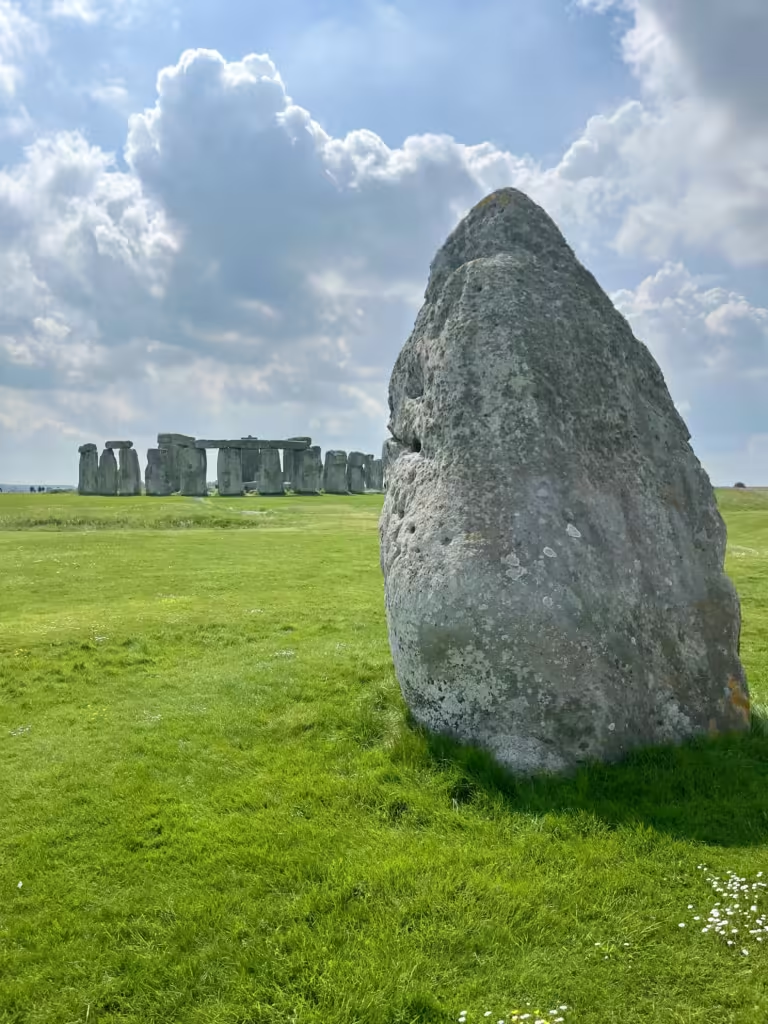
Where is Stonehenge?
Address: Near Amesbury, Wiltshire, SP4 7DE
Stonehenge is located on Salisbury Plain in Wiltshire, England, 2 miles West of Amesbury and 8 miles North of Salisbury.
The A303 passes close to the stone circle and traffic can be very busy during peak times.
How to visit Stonehenge
There are several ways to visit Stonehenge on a day trip.
- You can drive yourself – Stonehenge is about an hour drive from the M4 and is signposted off the A360 and A303.
- There is a Stonehenge Tour Bus which leaves from Salisbury city centre (Entrance to Stonehenge is included in the tour).
- Salisbury is the nearest train station. There is a direct line from London Waterloo which takes around 1h30m. If you are arriving by train, you can catch the Stonehenge Tour Bus from Salisbury Railway Station which leaves hourly and takes you to the Visitor Centre.
How much does it cost to visit Stonehenge?
On the day tickets [2024] | ||
|---|---|---|
| With donation | Without donation | |
| Member – Join now | Free | Free |
| Adult | £33.00 | £30.00 |
| Child (5-17 years) | £20.00 | £18.10 |
| Concession (Students, OAP’s) | £30.00 | £27.20 |
| Family (2 adults, up to 3 children) | £86.00 | £78.10 |
| Family (1 adult, up to 3 children) | £53.00 | £48.10 |
Stonehenge Ticket Discounts:
Book online in advance and save 15%. Click the button below to book your Stonehenge tickets.
Look out for ‘late saver’ tickets at Stonehenge, available to buy online for later timeslots on summer weekends.
National Trust members can also visit Stonehenge for free.
When is the best time to visit Stonehenge?
The best time to visit Stonehenge, when there are less crowds, is generally early morning or late afternoon. There are often tour buses which arrive mid-late morning, so arriving earlier or later in the day will often avoid them. The English Heritage website advises that the quietest times to visit are before 11am and after 2pm.
The peak season for visitors are in the summer months and school holidays, therefore, will be busier during this time. Plus, weekends are likely to be busier than a mid-week visit.

Stonehenge opening times
Stonehenge is open every day except Christmas Day.
Summer Opening Times:
1st April to 29th September 2024 – Open from 9.30 am to 7.00 pm every day
Winter Opening Times:
From 30th September to 20th October 2024 – Open every day from 9.30 am to 6.30 pm.
From 21st October 2024 to 31st March 2025 – Open 9.30 am to 5.00 pm. (Christmas Eve open until 7.00 pm).
Last admission is two hours before closing time.
Can you visit Stonehenge for free?
Membership
You can visit Stonehenge for free if you are a English Heritage member or National Trust member.
If you don’t have membership for either of these, there is another way to visit the stones for free. Although, in our opinion the experience is not quite the same.
Public Footpath
There is a public footpath running along one side of the stone circle, so you can view Stonehenge from this path. It’s marked on Google Maps as ‘Stonehenge Public Access Footpath’. From this path you will only be able to view the stones from one side. But if you pay to enter (or have membership) you can walk all the way around the stones. You’re also able to get a bit closer to Stonehenge and therefore, enjoy a much better experience, in our opinion.

Visit Stonehenge for Summer and Winter Solstice
Another way of visiting Stonehenge for free is by going at Summer or Winter Solstice. These two events are not only beautiful but you are able to go inside the stone circle. Please note, these two events are very busy and you’ll need to arrive very early (before sunrise).
Summer and Winter Solstice are free events but you’ll still need to pay for car parking (which is currently £5/car). When the car park is full, English Heritage close the car parking area and you’ll need to find somewhere else. Remember to bring a torch with you, warm clothes and decent foorwear. The stones are a half an hour walk from the car park.
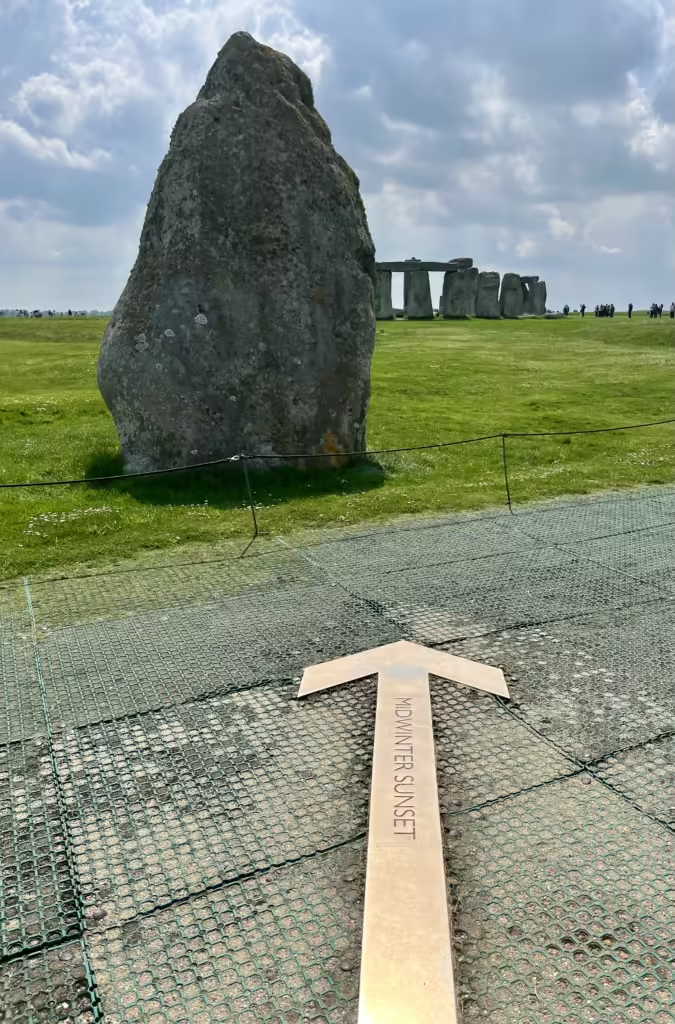
Woodhenge
The final way to visit Stonehenge for free is to walk from Woodhenge. Woodhenge is a Neolithic henge and timber circle monument within the Stonehenge World Heritage site. There is a 2.5 mile (4 km) walking trail from Woodhenge to Stonehenge and there is a small free car park at Woodhenge too.
What can you do at Stonehenge?
There is plenty to see and do at Stonehenge for the whole family.
- See the iconic stone circle.
- Enjoy a 2km walk from the visitor centre to the stones, or catch a free shuttle bus.
- Explore the exhibition at the visitor centre – featuring fascinating artefacts from the time of the Stonehenge builders, many of which are on loan from Salisbury Museum and Wiltshire Museum, and multi-media displays. There’s also a changing special exhibition space which has recently included contemporary art, photographs, Stonehenge ephemera and archaeological treasures from museums around the world.
- Discover the replica Neolithic Houses which you can even go inside for a look. There are often demonstrations from the staff in this area too (bread-making over a fire, or ancient craffting).
- Check the English Heritage website for special family events. We were lucky enough to be invited along for their Playhenge Event in May Half Term run by the Woodland Tribe. This summer, look out for the ‘Kids Dig at Stonehenge‘ running between 20th July and 1st September 2024. This event is included in the standard entry price.
- Explore the Stonehenge gift shop selling a wide range of souvenirs and gifts.
- Refuel at the Stonehenge cafe, which sells hot and cold drink and a variety of food.
- Enjoy a picnic with a view – bring your own food and a blanket and sit on the grass next to the stones.


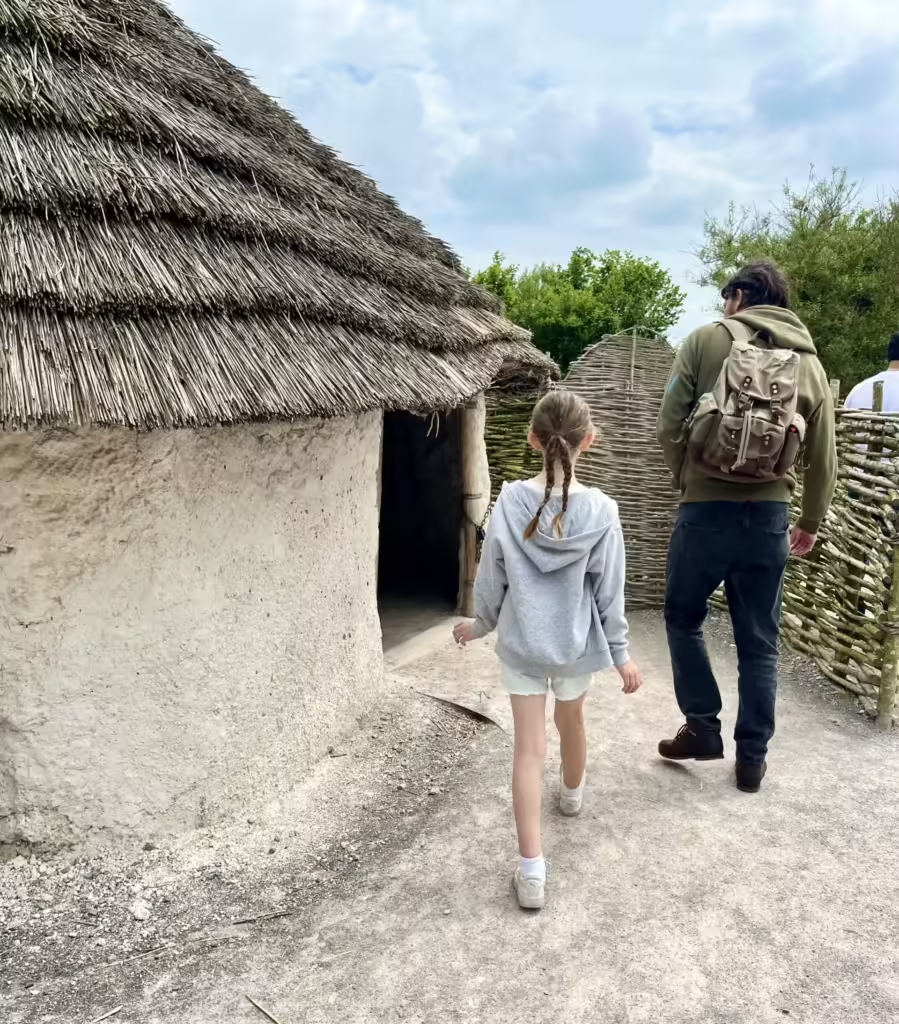
How long does it take to visit Stonehenge?
We suggest you allow a couple of hours when visiting Stonehenge which gives you enough time to look around the stone circle, exhibition, visitor centre and Neolithic Houses. It’s also a lovely 2km (level) walk from the visitor centre to the stone circle which takes about half an hour. There are lots of information boards around the site to read as well. If you want to buy a souvenir, there is a gift shop selling lots of Stonehenge goodies. Plus, if you want to stop at the cafe there are plenty of places to sit, have a drink and bite to eat.
If you have less time, there is a free shuttle bus from the visitor centre to the stone circle every 10-15 minutes to save you from walking.
Once you’ve entered the site you can spend as long or as little time here as you want, there is no time limit. The only restrictions are the opening and closing times.

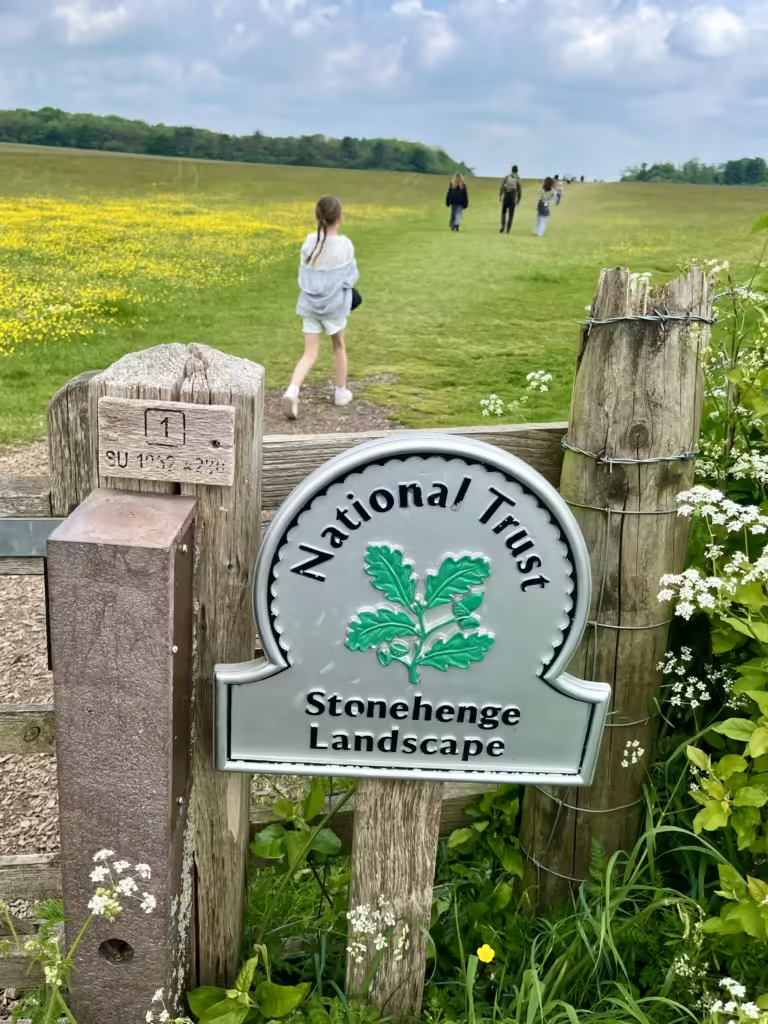
2km walk to Stonehenge
How much does it cost to park at Stonehenge?
If you are a member or have pre-booked your tickets to Stonehenge, car parking on site is FREE. Otherwise, you’ll pay £5 to park your car. There are spaces in the car park for motorhomes.
Can I touch the stones at Stonehenge?
You cannot touch the stones at Stonehenge, they are roped off to protect the stones and prevent the ancient site from being trampled. No person may touch, lean against, stand on or climb the stones, or disturb the ground in any way. Stonehenge is protected under the Ancient Monuments and Archaeological Areas Act 1979.
You are able to book a Stone Circle Experience through English Heritage. This allows for an unforgettable opportunity to get up close to this world-famous monument and spend time inside the circle of Stonehenge. These tours are held early in the morning or later on in the evening outside normal visiting hours.
What do I need to know before going to Stonehenge?
Stonehenge Audio Guide
Before you arrive at Stonehenge, download the Stonehenge Audio Guide on your mobile phone or tablet for free. It offers three audio tours and is a great way of learning more about Stonehenge and its builders. The App also provides information about what’s on and practical information about the site.
Is Stonehenge accessible?
Stonehenge is accessible – there are wheelchairs to borrow if needed, just ask a member of staff. There are accessible toilets in the car park, visitor centre and at the stones (opened on request).
Registered assistance animals are allowed in all areas including the shuttle bus. The shuttle bus also has a ramp.
What to bring with you
There is no shelter at the stone circle so wear weather appropriate clothing. It can get muddy in very wet weather.
Book tickets in Advance
If you book your tickets in advance, on site car parking is free. Otherwise, you’ll currently have to pay £5. (Parking is included for English Heritage Members).
Places to visit near Stonehenge
- The Medieval City of Salisbury – explore this pretty city on foot, discover the independent shops, parks and riverside pubs.
- Salisbury Cathedral – is Britain’s tallest spire; is home to one of only four surviving original 1215 Magna Carta and the oldest working mechanical clock in the world.
- Salisbury Museum – showing artefacts from the Stonehenge World Heritage Site, the Pitt-Rivers Wessex Collection and the Amesbury Archer.
- Woodhenge – a Neolithic timber monument close to Stonehenge. Probably built about 2500 BC, consisting of six concentric ovals of standing posts, with a bank and ditch surrounding it, aligning with the summer solstice sunrise. Woodhenge is free to visit.
- Old Sarum – an Iron Age hill fort and the site of the original city of Salisbury where the first cathedral once stood.


Read More UK Travel Guides
Pin it for later!
Found this useful? Share on Pinterest
Follow us on social media
Somerset Family Adventures is a free online resource. If you enjoyed this blog post and found it helpful, you can say thanks and show your support by buying me a coffee. Thanks so much! You can also sign up to our newsletter to be the first to hear of our new walks and days out.
Share this post with your friends and family, and follow us on our social media. Feel free to tag us in your photos if one of my posts has inspired you to visit.
Share this post: on Twitter on Facebook
